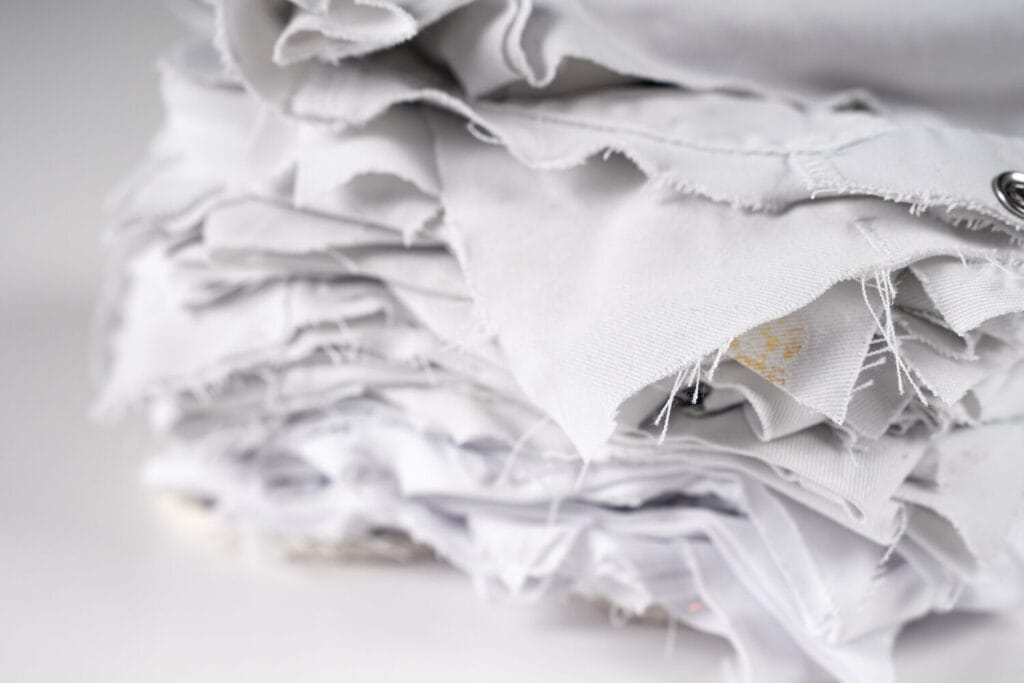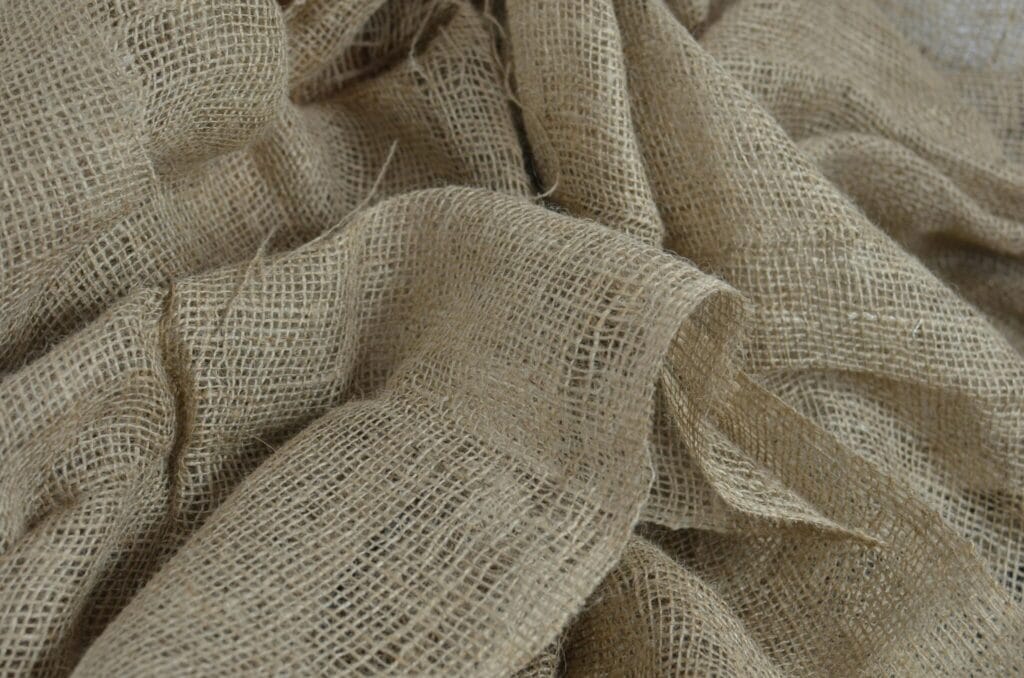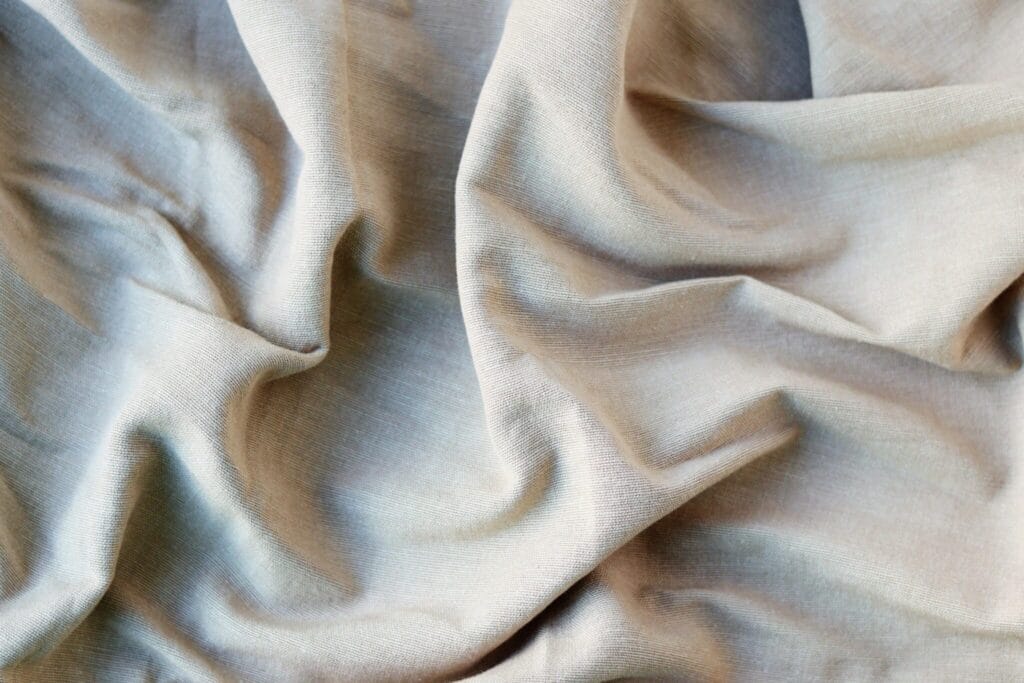The sustainability of mats

Have you ever considered the environmental impact of the mats you walk on every day?
What about the materials from which they’re made, the process behind their upkeep, their cleaning, or how they’re eventually disposed of?
Well, at Lindström, mats and their impact on the environment is something we are passionate about, and our mat rental service is now an important part of our drive towards sustainability. In this page, you can find an overview of our goals and approach to sustainability, with a special focus on how this impacts our mat rental service.
What is a mat service?
In the case of Lindström, a mat rental service is a full service offering. The main benefit of a rental service is that someone else takes care of the entire process, alleviating the burden placed on you as a client.
The service begins with analysing the customer’s needs and the production of standard or custom-made design mats. The ongoing service after that includes the pick-up, storage and delivery of your mats, as well as the cleaning, maintenance, and end-of-life management, whether through recycling or safe disposal. Read more about what a mat service is here.
Using Lindström as a partner also means that you enjoy many advantages in terms of sustainability. The way Lindström rental service achieve these environmental benefits is explained below.

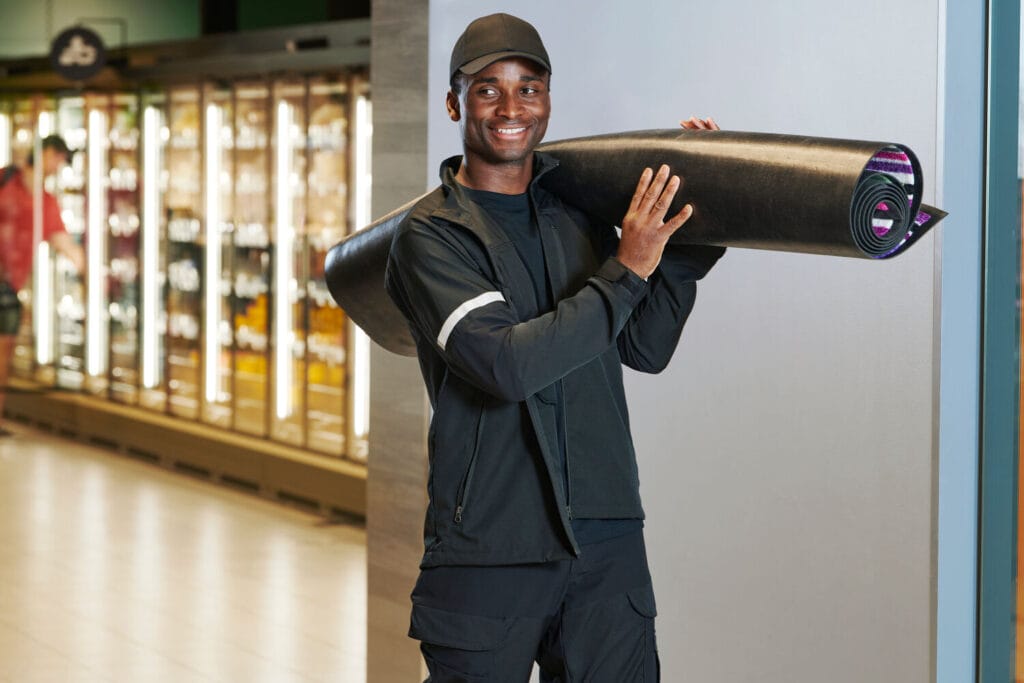
Lindström's sustainability vision
The textile sector has a significant impact in our lives, which is why, as an industry pioneer, the efforts and contributions we make are critical. At Lindström, we consider the environmental impact of our operations across all functions. We have set three bold sustainability objectives:

100% textile waste recycling by 2025
In 2023, we were able to recycle 74% of our total textile waste. One of our future goals is to be able to use our own textile waste as raw material.

50% emissions reduction by 2030
Starting from base levels set in 2021, our target is to reduce greenhouse gas emissions by 50% across the value chain by 2030, ultimately achieving net-zero by 2050.

30% of new textiles include sustainable materials by 2025
We aim to increase the sustainability of our materials so that at least 30% of new textiles include recycled or bio-based materials by 2025.
To achieve these goals Lindström has set out a few foundational principles that help to guide our actions.
The first is to base our activities on the concept of a circular economy. This means we are focused on searching for ways to reduce overproduction and to limit or replace the use of natural resources.
The second is the adoption of science-based environmental targets. This helps to steer efforts towards outcomes that will achieve genuine ecological improvements across the entire value chain. This is in contrast to performative actions or steps that may inadvertently do more harm than good.
Thirdly, we embrace transparency and track progress through regular audits. Achieving this requires long-term supplier relationships to ensure sustainability is being adopted throughout the supply chain.
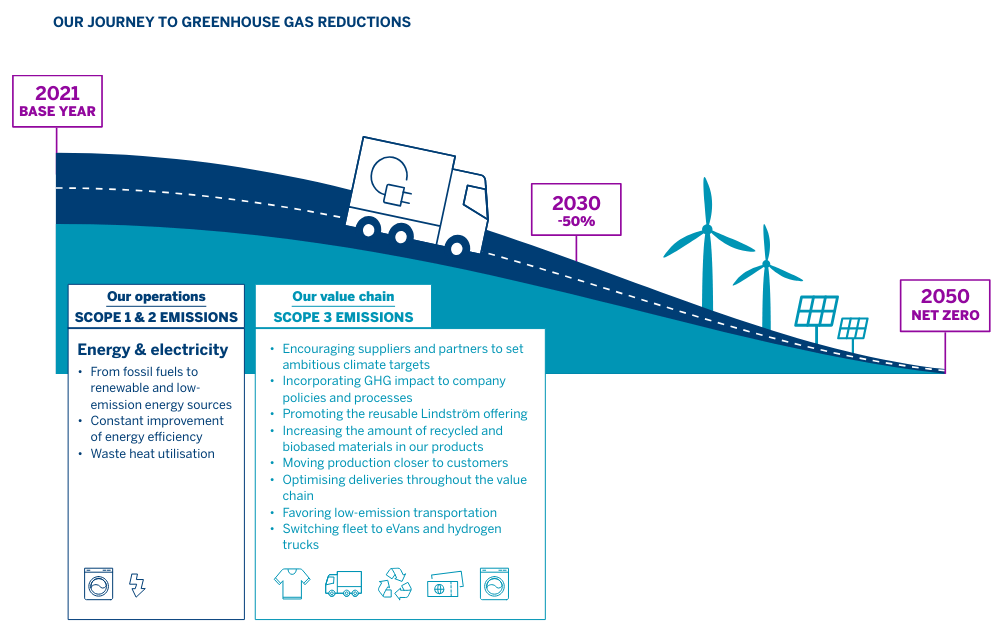
The circular economy drives textile trends
In addition to the importance of environmental standards and concerns, there are significant economic trends impacting the textile industry:
Lindström mat service and environmental goals
The whole of Lindström’s approach to our climate targets are science-based and approved by the Science-based Targets initiative. Additionally, Lindström has set recycling goals and a goal to increased recycled materials in textiles. Below are some of the critical areas that we focus on when trying to reach those targets and how they are impacted through our mat rental service.
Designed to last
In the textile industry, everything starts at the design stage – and Lindström mats are no exception. As far back as 2021, the design mat collection was produced with 100% recycled yarn. In 2023 the new mats in the standard collection began to be made using phthalates-free rubber.
Lindström strives to achieve the set targets without sacrificing quality and durability, designing products that are made to last. Product Specialist Lilli Hietala, explains that the “goal is to use recycled materials and keep the quality as high as possible. We don’t want to generate more waste in the name of sustainability”.
Lindström’s design process not only looks at how more recycled materials can be incorporated but also strongly considers durability. This avoids overproduction as well as reclaiming material when a mat does finally reach its end of use.
Durability in partnerships and procurement
Lindström’s partnerships and procurement are fundamental in sourcing sustainable materials for products. In order to maximise the lifespan of textiles, materials must be durable and suitable for repair and reuse. Lindström has increased the use of materials such as Renycle as well as phthalates-free rubber for standard mats. Lindström’s Design mats also include the use of Econylon.
Although Lindström’s goals is to reduce using virgin resources and that all mat collections are partially made from sustainable materials, products must still be long lasting. To achieve this, our partners play a key role in mat product development and testing.
“We work with the best raw material and mat manufacturers in Europe. Cooperation with them enables our product development”, explains Lilli Hietala.
Efficient service processes
Renting mats as a service is an example of the circular model in action. By washing, maintaining and repairing mats, customers can be sure that the use of the product is maximised.
Through years of experience, Lindström has developed and invested in industrial laundry processes that are efficient yet resourceful. We use resources responsibly by recycling the water from rinsing phases, lower washing temperatures as well as with shorter process times to save energy.
To offer the quality of rental service, Lindström needs to be close to our customers. With our network of local service centres, distances are short and our local transportation partners mean that one kilogram of laundry only travels an average of 260 metres.
Recycled, not wasted
A mat consists of three layers: the yarn, the rubber underlay, and the mid-layer that connects the two. Lindström mats are made from rubber, with nylon yarn vulcanised together on top. Separating these two materials at the end of the mat lifecycle is a challenge. In 2023, Lindström was able to recycle 23.5% of the end-of-life mats, finding their way into plasterboard panels, floor tiles, and wall panels. The mat recycling target for 2024 was 50%, and we managed to exceed it – reaching a percentage of 69.3.
In addition to expanding the network of recycling partners, Lindström is researching and developing new material combinations to make the mats themselves more sustainable. However, because the washing process is very rough, it’s hard to find new, more sustainable materials that don’t compromise on lifespan or quality.
Enabling sustainability through renting mats
As you can see, a mat rental service enables many ways to impact sustainability. By disposing end-of-life mats responsibly, we can recover and reuse the materials for new products. We also value durability from the start, making sure clients receive quality products time after time, in a long-term partnership
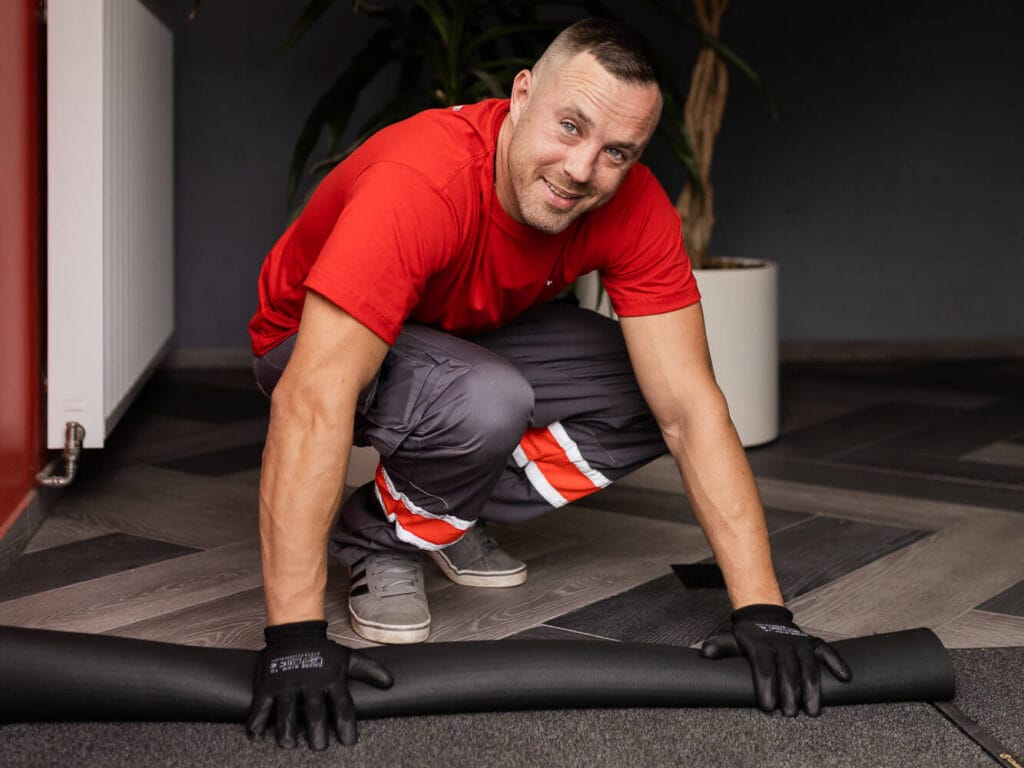

Tired of uniform headaches? See how Mala’s Food Products found a simple, hygienic solution that just works.
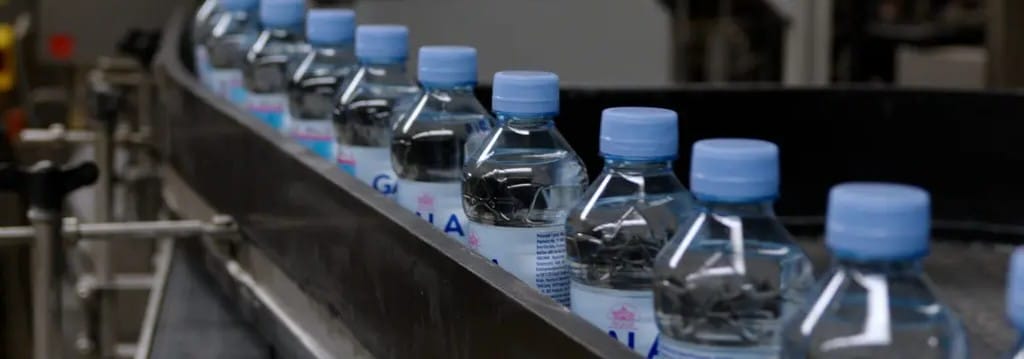
To meet high standards in producing still and sparkling water as well as soft drinks, Mioni relies on Lindström’s certified workwear service.

